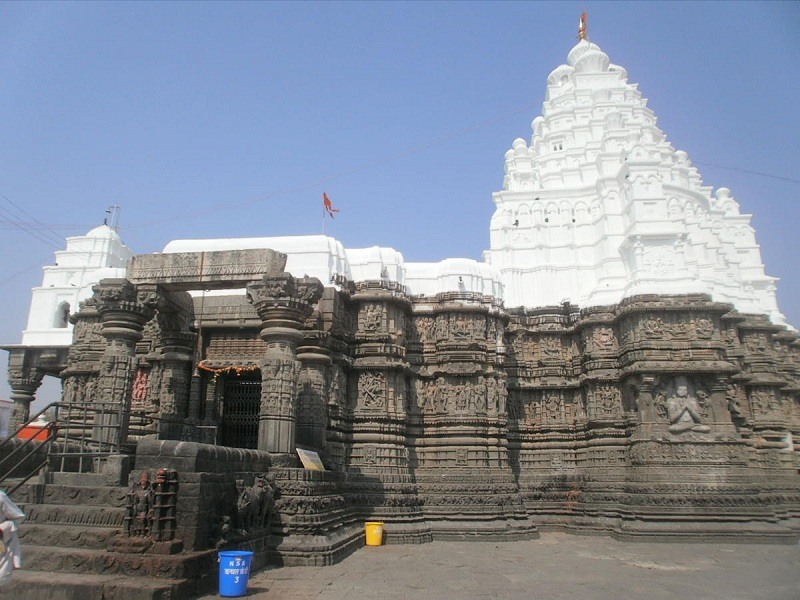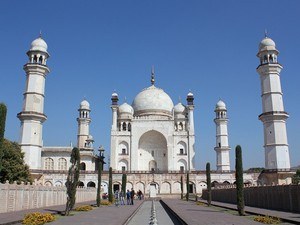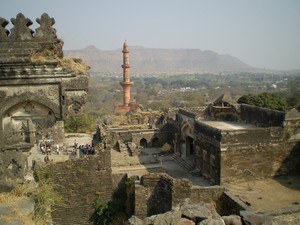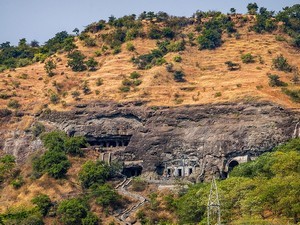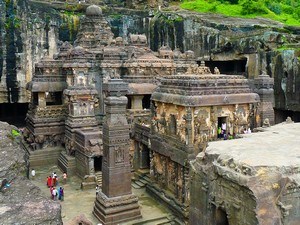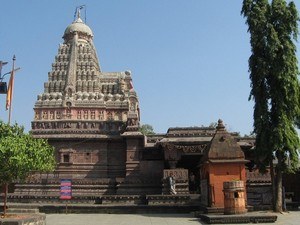Aundha Nagnath Temple, Aurangabad - Timings, Festivals, History, Darshan, Pooja Timings
Photo Credit: Flickr
 #6 of 13 Places to Visit in Aurangabad
#6 of 13 Places to Visit in Aurangabad
 Distance (From Aurangabad): 204 Kms
Distance (From Aurangabad): 204 Kms
 Trip Duration (Including Travel): 4 Hours/Half Day
Trip Duration (Including Travel): 4 Hours/Half Day
 Place Location: At Aundha
Place Location: At Aundha
 Transportation Options: Bus / Cab
Transportation Options: Bus / Cab
 Travel Tips: None
Travel Tips: None
About Aundha Nagnath Temple
At a distance of 25 Km from Hingoli, 61 Km from Nanded, and 204 Km from Aurangabad, Aundha Nagnath Temple is an ancient Hindu temple located at Aundha Nagnath in the Hingoli district of Maharashtra, India. Aundha Nagnath Temple is dedicated to Lord Shiva who is worshipped here as Lord Nagnath. It is recognized as the eighth Jyotirlinga among the twelve Jyotirlinga temples across India and is one of the five Jyotirlingas located in Maharashtra. The other four are Vaidyanath near Parli, Trimbakeshwar near Nashik, Grishneshwar near Aurangabad, and Bhimshankar near Pune. Additionally, the temple holds significant connections to the lives of notable saints such as Visoba Khechara, Namdev, and Jnanesvar. This is one of the top places of pilgrimage in Maharashtra, and among the sacred pilgrimage sites near Aurangabad.
History of Aundha Nagnath Temple
The origins of the Aundha Nagnath Temple are steeped in ancient history. According to legend, it was initially constructed by Yudhishthira, the eldest of the Pandavas, during their period of exile, thus marking it as a significant location in the Mahabharata epic. The current edifice of the temple is thought to have been built in the 13th century under the rule of the Seuna (Yadava) dynasty. It is also said that Mughal Emperor Aurangzeb attempted to demolish the Aundha Nagnath Temple; however, his efforts were thwarted when a swarm of bees attacked his soldiers, prompting him to abandon the endeavor. Despite this, some damage was inflicted upon the revered Jyotirlinga. Subsequently, Rani Ahalyabai Holkar, the Queen of the Maratha Malwa Kingdom, undertook the restoration and renovation of the temple.
Mythology of Aundha Nagnath Temple
The Aundha region was once characterized by its dense forests, inhabited by serpents. It was known as Darukavane, named after the Asuras Daruk and Daruka. The demons troubled the hermits residing in the area and captured them. This provoked the Gods, who battled the demons and expelled them. However, Daruka was a devoted follower of Lord Shiva and received a boon from Goddess Parvati, granting them the ability to transform the entire forest into an island. Consequently, the demon continued to torment the hermits from this island. As Daruka's tyranny escalated, the sages prayed Lord Shiva for assistance, leading him to manifest as a Jyotirlinga at Aundha to protect the sages and restore their peace.
Additionally, another legend suggests that Lord Shiva appeared here out of compassion for the Pandavas during their exile, endowing the shrine with both spiritual significance and a connection to the Mahabharata.
Architecture of Aundha Nagnath Temple
Spread over an area of 60,000 sq. ft., Aundha Nagnath Temple was built in Hemadpanthi architectural style. However, its upper portion was repaired during the later period and is in the style which was prevalent during the Peshwa's regime. The temple has exquisite carvings. The Jyotirlinga is located below the ground level accessed by two deep steps. The Aundha Nagnath premises also house 12 small temples for the 12 Jyotirlingas. One can also visit 108 temples and 68 shrines, all belonging to Lord Shiva within the premises of the Nagnath Temple. It is common to see the Nandi statue facing the Lingam in every temple but in the Aundha Nagnath Temple, the Nandi statue is located behind the shrine. This is a rather peculiar feature of this Jyotirlinga temple, in which the reason behind such a feature is still unknown.
Festivals of Aundha Nagnath Temple
The temple is renowned for its annual Maha Shivaratri festival, held in February or March, which commemorates the sacred union of Shiva and Parvati. This event draws a significant number of devotees who engage in special ceremonies such as abhishekam, hymn recitation, and all-night vigils. Furthermore, the month of Shravan, usually in July or August, is considered especially favorable for Lord Shiva, resulting in large gatherings of worshippers. The temple also organizes the Magha Fair in January or February, an annual celebration that attracts both pilgrims and tourists. This fair fosters a vibrant atmosphere, merging spirituality with cultural celebrations, as devotees participate in religious processions, chanting, and traditional practices.
Dress Code & Other Restrictions of Aundha Nagnath Temple
While Aundha Nagnath Temple doesn't have a strict dress code, it is recommended to adhere to modest clothing that covers your upper arms and legs as a sign of respect. Men are encouraged to wear a dhoti or pajama paired with an upper garment, as well as formal trousers and shirts. Women may opt for a saree, half saree, or chudidhars. It is advisable to refrain from wearing contemporary attire such as mini-skirts, shorts, and sleeveless tops while on the temple grounds.
Non-Hindus are welcome to explore the temple complex and appreciate its architectural beauty; however, access to the sanctum sanctorum may be restricted.
Aundha Nagnath Temple Timings
Monday: 5:30 AM - 9 PM
Tuesday: 5:30 AM - 9 PM
Wednesday: 5:30 AM - 9 PM
Thursday: 5:30 AM - 9 PM
Friday: 5:30 AM - 9 PM
Saturday: 5:30 AM - 9 PM
Sunday: 5:30 AM - 9 PM
Aundha Nagnath Temple Entry Fee
General Entry is Free
Special Darshan available for Rs. 200
Best Time to Visit Aundha Nagnath Temple
The Aundha Nagnath Temple remains accessible year-round, yet the most favorable period for a visit is between October and March, when the climate is agreeable, facilitating a comfortable exploration of the temple and its surroundings. For those seeking to witness the temple at its most spiritually vibrant, it is recommended to schedule your visit during Maha Shivratri or the month of Shravan, when elaborate rituals and festivities enhance the temple's sacred atmosphere. Although the monsoon season from June to September transforms the surrounding landscape into a verdant paradise, the intense rainfall may pose some travel difficulties. Conversely, it is best to refrain from visiting during the summer months due to the extreme heat.
How to Reach Aundha Nagnath Temple
The closest airport to Aundha Nagnath Temple is Nanded Airport, located 61 kilometers away, which provides regular flights from major urban centers. Alternatively, Aurangabad Airport, situated approximately 204 kilometers from the temple, offers superior connectivity. Taxis and buses are readily accessible from both airports to facilitate travel to the temple. The nearest railway stations are Hingoli, 25 kilometers away, and Parbhani, 50 kilometers away, both of which are well-connected to Maharashtra's railway system. From these stations, travelers can hire cabs or utilize state transport buses. For those traveling by road, there are frequent state transport buses and private taxis available from Hingoli, Nanded, Parbhani, and Aurangabad.



